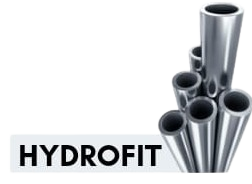Hydraulic Seamless tubes used for automotive fuel injection systems
Automotive fuel injection systems are crucial components in modern vehicles, helping to deliver the right amount of fuel to the engine for efficient and clean combustion. Fuel injection systems have evolved significantly over the years, and various types of tubes and components play essential roles in their operation. In this detailed article, we will explore the different tubes used in automotive fuel injection systems and their functions.
Introduction to Automotive Fuel Injection Systems
Fuel injection systems have largely replaced carburetors in modern vehicles because they offer better fuel efficiency, lower emissions, and improved overall engine performance. These systems are responsible for precisely metering and delivering fuel to the engine’s cylinders. Key components of a typical fuel injection system include:
- Fuel Tank: This is where the vehicle stores its fuel.
- Fuel Pump: The fuel pump is responsible for drawing fuel from the tank and delivering it to the fuel injection system under pressure.
- Fuel Injector: Fuel injectors are nozzles that spray fuel directly into the engine’s intake manifold or combustion chamber.
- Fuel Pressure Regulator: This component maintains the correct fuel pressure in the system by controlling the return of excess fuel to the tank.
- Fuel Rail: The fuel rail is a tube that distributes pressurized fuel to individual fuel injectors.
- Fuel Filter: It ensures that the fuel entering the injectors is free of contaminants.
Types of tubes used for different lines in a Fuel Injection System
- Fuel Lines:
Fuel lines are critical components that carry fuel from the fuel tank to the fuel rail. They are usually made of high-strength materials such as steel or nylon to withstand the high-pressure conditions within the system. These lines are designed to be leak-proof and resistant to corrosion.
- Fuel Rails:
Fuel rails are essentially tubes that distribute fuel to individual fuel injectors. They are often made of aluminum or stainless steel because of their durability and resistance to corrosion. Fuel rails have a high-pressure chamber that maintains consistent fuel pressure for all injectors.
- Fuel Injector Tubes:
These are small tubes or nozzles connected to the fuel rail and positioned directly over each cylinder’s intake port. Fuel injector tubes have precision openings that spray fuel in a fine mist into the combustion chamber or intake manifold, ensuring proper mixing with air for combustion.
- Return Lines:
In a fuel injection system, excess fuel that is not needed for combustion is returned to the fuel tank to maintain a constant pressure in the fuel rail. Return lines are responsible for this function, and they are typically smaller in diameter compared to the main fuel lines.
- Vapour Lines:
Vapor lines carry fuel vapor from the fuel tank to a vapor canister for emission control purposes. These lines prevent the release of fuel vapor into the atmosphere, helping to reduce pollution.
- Pressure Sensor Tubes:
Modern fuel injection systems often include pressure sensors that monitor fuel pressure in the system. Tubes connected to these sensors relay pressure information to the engine control unit (ECU) for real-time adjustments to optimize fuel delivery.
Automotive fuel injection systems rely on various tubes and components to deliver the right amount of fuel to the engine, ensuring efficient and clean combustion. These tubes, including fuel lines, fuel rails, fuel injector tubes, return lines, vapour lines, and pressure sensor tubes, all play essential roles in the system’s operation. They are engineered to withstand high pressures and harsh conditions, contributing to the overall performance and reliability of modern vehicles.

